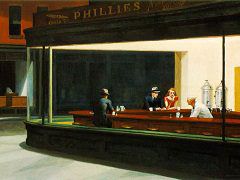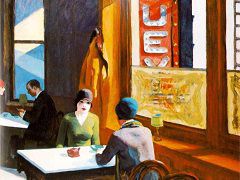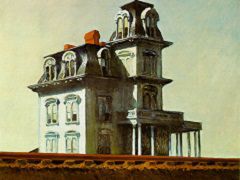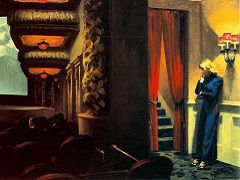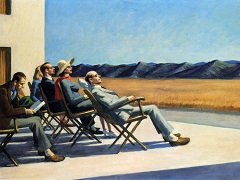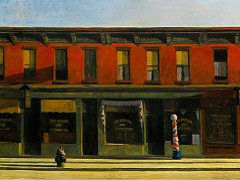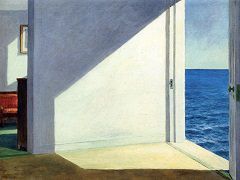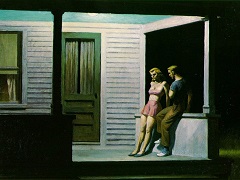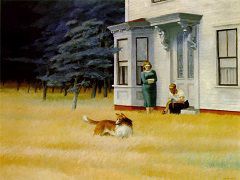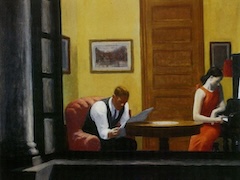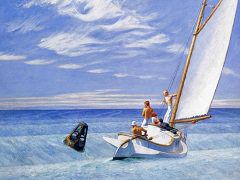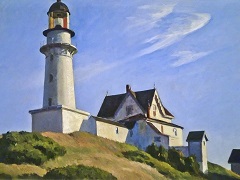Office at Night, 1940 by Edward Hopper
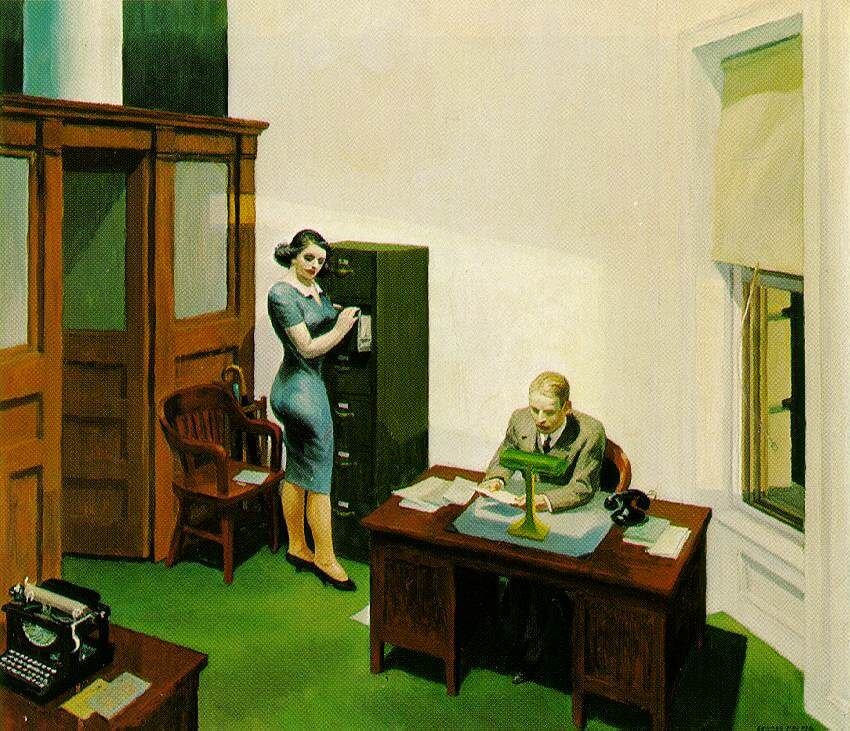
Office at Night is a 1940 painting by Edward Hopper. It is currently owned by the Walker Art Center in Minneapolis, Minnesota which purchased the painting in 1948.
The painting depicts an office, occupied by an attractive young woman in a short-sleeved blue dress, who is standing at an open file cabinet, and a slightly older man who is perhaps in early middle age. He is dressed in a three-piece suit and is seated behind a desk. The nature of the office is unclear it could just as easily be the office of a lawyer, an accountant, or of a small business.
Several clues provide context: The high angle from which the viewer looks down on the office implies that the viewer may be looking in from a passing elevated train indeed, Hopper later informed Norman A. Geske, the curator of the Walker Art Center, which acquired the painting in 1948, that the idea for the painting was "probably first suggested by many rides on the 'L' train in New York City after dark glimpses of office interiors that were so fleeting as to leave fresh and vivid impressions on my mind." So this is not a prestige office a fact that is reinforced by the awkward lozenge shape of the room, and by the small size of the man's desk. A yet smaller desk, holding a typewriter, may belong to the woman. This implies that she may be his secretary.
Hopper's inspiration to depict an office scene, a subject rarely portrayed in art, comes not only from his experience illustrating office system and other magazines but also from such paintings as The Cotton Exchange, New Oreleans and Sulking, both by Edgar Degas.
There is a sexual interpretation of the relationship between the two individuals. Here, as in a number of Hopper's works, such as Evening Wind (1921) and Summertime (1943), the stirring of curtains or blinds seems to symbolize emotional or physical stirrings. (By contrast, listless curtains in other Hopper paintings like Eleven A.M. (1926) and Hotel by a Railroad (1952) seem to imply emotional stagnation or an inability to connect.)

